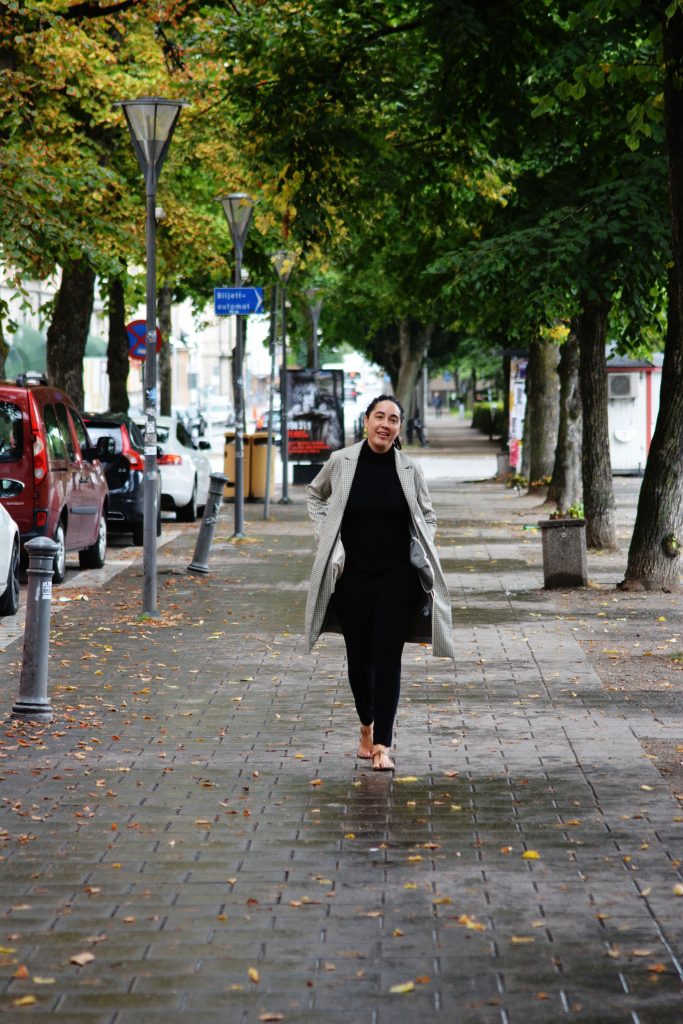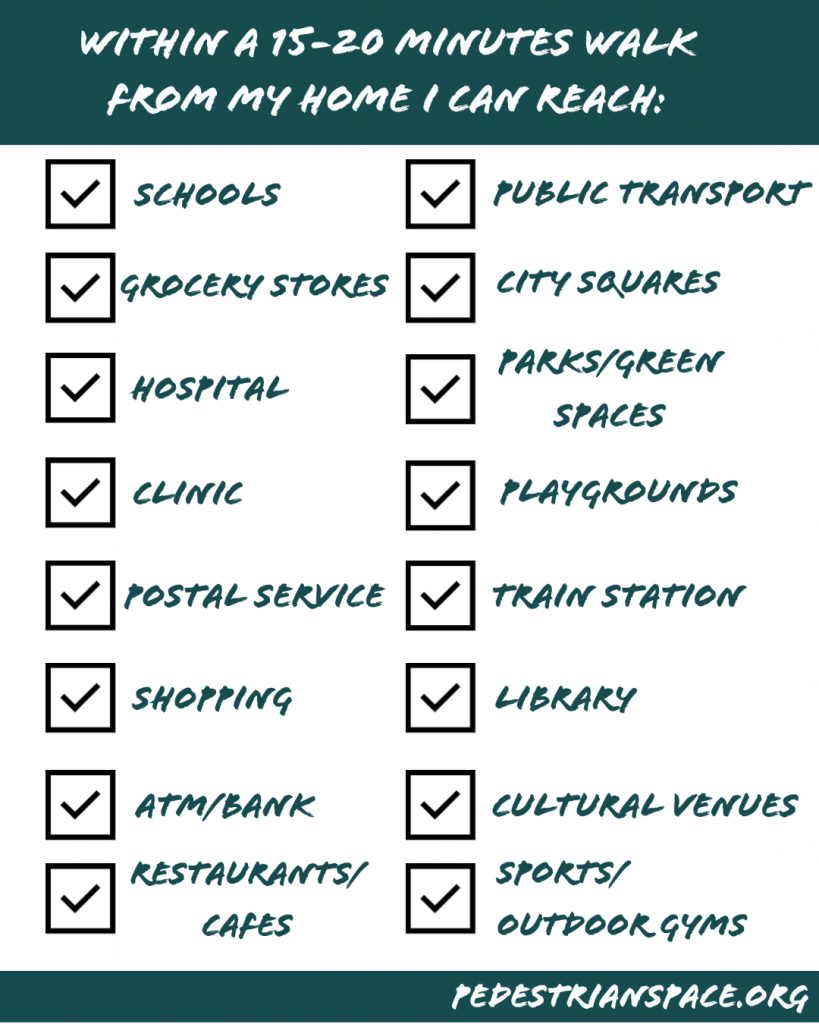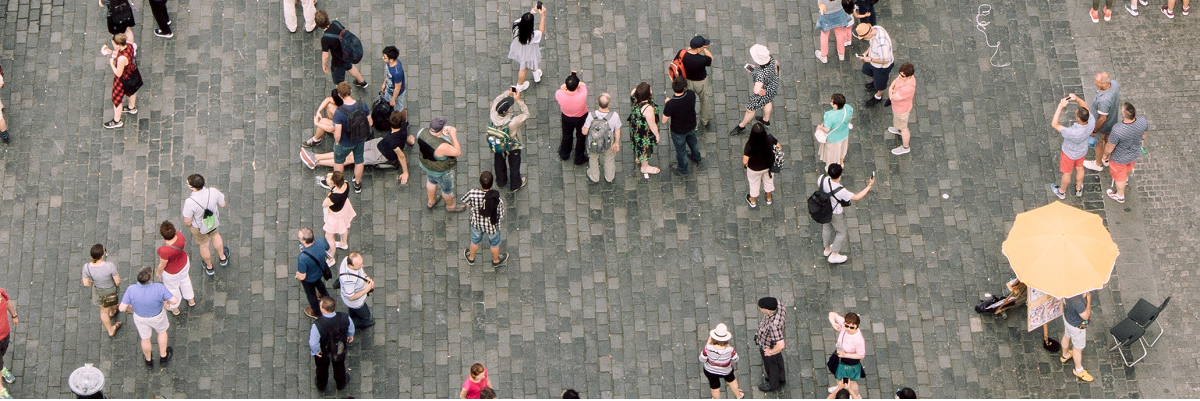Today I am speaking with Annika. She is the editor as well as a content creator at Pedestrian Space – an advocacy, research & media platform for pedestrianization & related themes. Since 2005 she has been working with media content & as a photographer for a range of platforms.
She holds a Master of Historic Preservation (Cornell University, 2008) & Master of Spatial Planning/Built Environment (Kungliga Tekniska Högskolan, 2003). She is excited to bridge her academic background in themes of urban planning with her experience in media to create this project & site for a global audience & engagement.
Read more about her personal connection to issues of walkability here.

Could you tell me more about your work at Pedestrian Space?
In Spring of 2020 I began to conceptualize a project with a focus on pedestrian initiatives, contemporary and historic. The idea began to further develop as a media, research and advocacy project with a broad focus on walkability and sustainable urbanism. I launched the website in January 2021 as a platform for things I’m working on as well as to welcome contributions from people around the world interested in and working with these themes.
How is walkability in your own city? What is difficult and what works?
I’ve lived in a couple dozen cities and towns in my lifetime and experienced such a wide range of walkability (or lack thereof). I currently live in Örebro, a medium-sized city in central Sweden that is extremely walkable. I really enjoy being able to directly experience and document a city rich with what I view as best practices of walkability, inclusivity and accessibility.
I also value looking back on cities I have lived in or visited that have a lot to be desired in terms of walkability. At Pedestrian Space, I’m dedicated to portraying that wide spectrum and with time hope that there is a really diverse range of content there that explores both critical challenges to pedesrtrianization and walkability as well as really great examples.

Do you have tips for people who would like to walk more / explore their city by foot?
Just begin! I am on foot every single day in our city and still find features I’ve never experienced before and parts of neighborhoods I’ve never walked. If you’re not used to walking, you can dedicate a time of the week to exploring the city by foot (give it a name like “Sidewalk Sundays” or something fun if that helps to motivate) and perhaps even make it a social event with friends and document what you see along the way with your phones.
For me, walking is one of my favorite ways to both be active and simultaneously unwind and also a very creative time. If you have something on your mind and want to work it out, I think taking a walk is a really basic, common-sense approach.
Also, just taking a walk for basic physical, mental and emotional health is fundamental and key.
Not everyone lives in walkable areas so then it can be about the puzzle of figuring out where to go to explore by foot. Begin with where you are at, see what piques your curiosity and have some fun with it. If you quickly begin to experience all the challenges of walkability in your area, you can perhaps find local walkability advocates to join forces with to document problems you see and help advocate for improved walkability.
Which cities have you experienced that are particularly good at providing walkability? Which are the most innovative solutions you have seen?
I’ve lived in a number of pretty walkable communities in different countries but am going to reference the Nordics here as I think there is consistency in many cities and towns here with great walkability. Pedestrian infrastructure and connectivity is excellent in many Scandinavian cities.

Obviously, there are always things to improve but what I observe here are many best practices that I would absolutely put into a textbook of walkability. With regards to the “software” – I think the mindset for mobility here also reflects the connectivity and infrastructure. I lived for some time in Tromsø, a city in northern Norway, and recall being impressed by how robust the walking scene was in this hilly Arctic region. Even in the depths of a very dark winter night there, you’d see people walking up and down the snowy hills all over town. Certainly, there were also a lot of drivers, but to me the point in paying attention to modal splits is looking at how strong and committed the walking culture is – that shows promise for the way forward.
I think what is most innovative is when common sense is applied to pedestrian infrastructure and walkability measures. With mobility, I don’t think we need so much innovation but more common sense in relationship to space. For example, I currently live in the heart of the city yet can reach a number of peripheral suburbs completely by foot or bicycle on excellent infrastructure- well-maintained paths, overpasses etc. For those living in these suburbs, that well-maintained connectivity is critical. There also happens to be an efficient bus system but for those who prefer walking and cycling – even to the peripheral suburbs, it is possible, efficient and safe. This is down to earth, common sense planning.
What do you think of the 15-minute city?
Nearly anyone who has had a chat with me about urbanism or taken a look at the Pedestrian Space website or social media knows that this is a topic I like to discuss. It begins at a personal point. A few years ago my family and I moved from the suburbs of Stockholm to Örebro. As we settled in here, I reflected on how much I loved our new urban life- I could reach everything I needed by foot within 5 – 15 minutes and the effect on our lifestyle was really practical and profound. My kids’ school? 15 minute walk away. Grocery store? Several options within a 3-15 minute walk. Parks, playgrounds, public squares, clinic, hospital and other amenities? All within a 15 minutes walk.
So when I heard about the official concept of the “15-minute city” last year, a lightbulb went off because I thought- “Aha! Yes, that’s exactly what we have been experiencing here.” It’s a feature that really enhances quality of life. I have begun documenting a bit here.
The hype about the concept sometimes appears to not acknowledge or to dismiss the reality that 15-minute cities do already exist. They are not new, they are not impossible to create, they are not radical concepts. So part of what I am seeking to do in my own coverage is to document best practices and explore how cities that already fit this description well came to be. I think the stories of planners in various cities who over the decades understood this concept of proximity and amenities is in fact particularly instructive for municipalities who are looking to bring the 15-minute concept more alive in their cities and neighborhoods.

I’ve also begun working on my first City Mobility Survey to gather perspectives from other residents of Örebro on their experience and perspective on the area as a 15-minute city and feedback on their perception of mobility and amenities in the city.
At the heart of my coverage and storytelling of my own experience is conveying that at heart, these features of connectivity and proximity to amenities for all residents is about equity and, I believe, an incredibly important dimension of sustainable urbanism. Having amenities like green space, medical services, schools, shopping etc within a reasonable walking distance from your home is a civic right and fundamental to the sustainable development of urban communities.
Where there is concern that developing this approach can lead to displacement and gentrification, I think we need to focus on engaging the community at all levels. Of course, it does not need to be a top-down approach and planning that occurs with a synergy between the municipality and the local actors within the community who can really advocate about community needs is critical where there are concerns. It is my belief that all urban residents deserve this quality of life but of course, different regions and communities require different approaches.
What are your book recommendations for walkable cities?
For a proper list, get back to me in about a year!!! I’m busy reading as much as I can lately, on a deep dive of essential titles for urbanism and walkability. I’m currently reading Janette Sadik-Khan’s ‘Street Fight‘ which is incredible. I cannot read that book without a pencil in hand – I am constantly underlining and taking notes. Last month I read Shane O’Mara’s ‘In Praise of Walking‘ which I appreciated greatly. The chapter “Walking the City” is excellent and such great reading for anyone interested walkability and urbanism. Next up on my list is Jeff Speck’s ‘Walkable City‘.
I read many of the urbanism “classics” during my graduate program studies in Urban and Historic Preservation Planning but that was years ago so I look forward to revisiting many of those titles and more. My reading list is long and growing! I’m also focused on adding more books on urbanism written by women to my list.
Thank you, Annika!
Want to read more about walkable, liveable cities? Join our Urbanism Book Club!
And here is the interview I gave to Annika:









